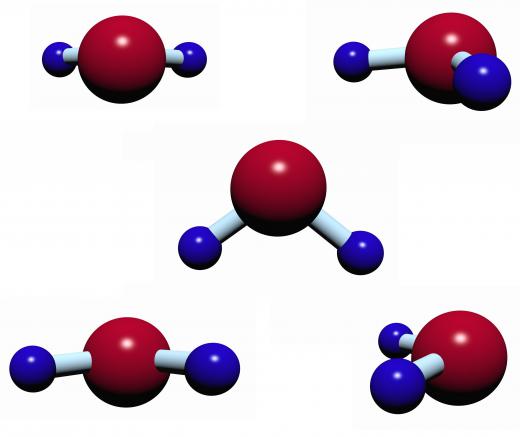What Is Wet Oxidation?
Wet oxidation is a chemical process for removing organic contaminants from wastewater streams. The process involves heating the contaminated water to high temperatures, and injecting air at high pressures. Reactions of air with the contaminants will oxidize them to common gases like carbon dioxide, which are separated later from the water stream.
Introducing air at lower pressures into water streams creates an agitation effect, but even at higher temperatures, the air will only partially react with any organic contaminants. Raising the pressure above the critical point of water, where water molecules are neither liquid nor vapor, creates a single phase when the air is introduced. The air will react very well with the organic materials, and a later step where the pressure is reduced will remove any remaining air and the gases formed by the reaction.

Water has a critical point, a temperature and pressure above which vapor and liquid cannot be seen as separate phases. This critical point is about 3206 psia (221 bar) and 705°F (374°C). Above this point, water is known as a supercritical fluid, and wet oxidation reactions often occur at these conditions.
An alternative process that permits the use of lower temperatures and pressures is accomplished with a catalyst. The waste stream is pressurized with air and passed over a suitable catalyst, which can vary depending on the contaminants. A catalyst helps the chemical reaction between the air and organic materials, but is not consumed or destroyed by the reaction. Catalytic wet oxidation reactions can occur in sub-critical conditions, which can reduce operating costs and use vessels with lower pressure ratings.
Materials of construction for the reactors and associated equipment used for wet oxidation must be chosen carefully. High temperatures can weaken many metals, which can compromise their strength to contain the necessary pressures. Some organic contaminants will create acidic compounds during the reaction, and many metals will not be suitable for corrosion protection. Pressurized heated air can oxidize and weaken materials used for sealants and gaskets, and care must be taken to choose inert materials that can withstand the severe operating conditions.
Due to the high pressures and temperatures needed for wet oxidation reactions, preheating of the air and wastewater streams can improve energy efficiency. Heat exchangers can be employed that use the high temperature fluids leaving the reactor to preheat the air and water streams. Additional heat can occur from the reaction of air with the organics, and using this heat can reduce operating costs for the system.
AS FEATURED ON:
AS FEATURED ON:











Discuss this Article
Post your comments